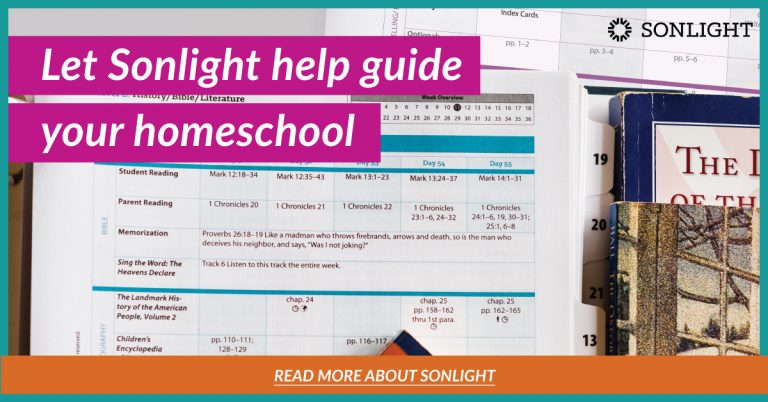Having a daily quiet time has become an essential part of our busy homeschool day. I love being with my kids, which is one of the reasons we started homeschooling, but we have all benefited from a daily quiet time in our house.
We first started a daily quiet time years ago when my oldest transitioned out of naps. Even though he didn’t need a nap, I found that he still needed to rest in order to make it happily to the end of our day. I found that I needed some peace and quiet in my day, too. So when his younger brother went down for a nap, I would start quiet time with my oldest by reading a few stories and then allowing him to play by himself while I recharged.
What Quiet Time Looks Like
Quiet time is a daily scheduled length of time where everybody in the house takes a break and does their own thing quietly.
This pause in the day is a chance to hit the refresh button.
Whether you have young children or high schoolers, it is the perfect time of day for everyone in the house to take a break from stimuli and rest.
- For your younger children, quiet time may be their nap time.
- For your older children they may like creating something with their hands, listening to audiobooks or podcasts, or resting in their room. My boys enjoy hands-on activities, so their activity of choice is often building with Magnatiles and LEGO, drawing, painting, or completing puzzles and activity books.
- For mom or dad, quiet time may be you reading a book or your Bible, working out, sipping your coffee on the back deck, or even taking a nap. Do something that will recharge you.
Adding a Daily Quiet Time to Your Homeschool Day
If you’ve never had quiet time in your house, you may wonder how to get started. Here are a few things to consider when adding quiet time to your daily homeschool routine.
- Decide how long quiet time will be. Start small and build up time from there. The goal may be an hour or more, but it can be tough for your children to be quiet for an hour when it hasn’t been expected of them before. Begin in increments and work up to your desired length of time. Maybe start with 10 minutes, slowly adding time over the next few weeks until you reach an hour.
- Decide when quiet time will be. Think about what time of day you can consistently dedicate to quiet time. Before lunch? During baby’s nap time? Right before dinner? Make it a time that, no matter what day of the week it is, you are typically home. If you have a different time each day of the week, it will be hard to instill a consistent quiet time.
- Pick a location. Select designated spots for quiet time. You can choose to have everyone together, or they can be in separate rooms, such as their own bedrooms. In our home, my youngest naps in his room, and my two oldest have quiet time together in our homeschool room/playroom. The two oldest are together, so that their shared bedroom is open if one of them decides to nap.
- Develop a routine. Having a predictable routine signals and prepares everyone for quiet time. At our house, we eat lunch, get the baby down for a nap, and then read from our current Sonlight Read-Aloud. Once I am finished reading, I leave the room, and their quiet time begins.
- Set clear expectations. Setting expectations for your children and holding to them is important! These are the rules we have for our quiet time:
- Stay in the room unless you need a bathroom break.
- Do something quietly.
- Clean up after you are done. Everything must be put away before you move on with your day.
- Quiet time lasts 1 hour from start time.
- Lastly, be consistent. When starting any new habit, consistency is key. It may take time for everyone to adjust to your new routine, but with clear expectations and consistency, it will happen.
Why Daily Quiet Time Is Important
Quiet time is important for everyone. For parents, it is a time for slowing down and quieting your mind. It creates a space for nurturing your soul.
Your presence is a source of stability for your children, and your heart and open arms are their haven, so take the time to pause in your day to nourish and rejuvenate yourself.
When you take the time to rest, you will be recharged and ready to pour into your children again.
For children, creating time for quietness gives them a mental break from their schoolwork, and helps establish a habit of rest and creativity. It gives them space and time to explore and discover their own passions and interests.
Margaret Wise Brown of Goodnight Moon said it well,
“In this modern world where activity is stressed almost to the point of mania, quietness as a childhood need is too often overlooked. Yet a child’s need for quietness is the same today as it has always been—it may even be greater—for quietness is an essential part of all awareness. In quiet times and sleepy times a child can dwell in thoughts of his own, and in songs and stories of his own.”
If you need time to rest, create space in your schedule for it. Quiet time is not misspent time. The magic of homeschooling does not lie in the hustle and bustle of constant activity, but in our intentional decisions made throughout the day.









